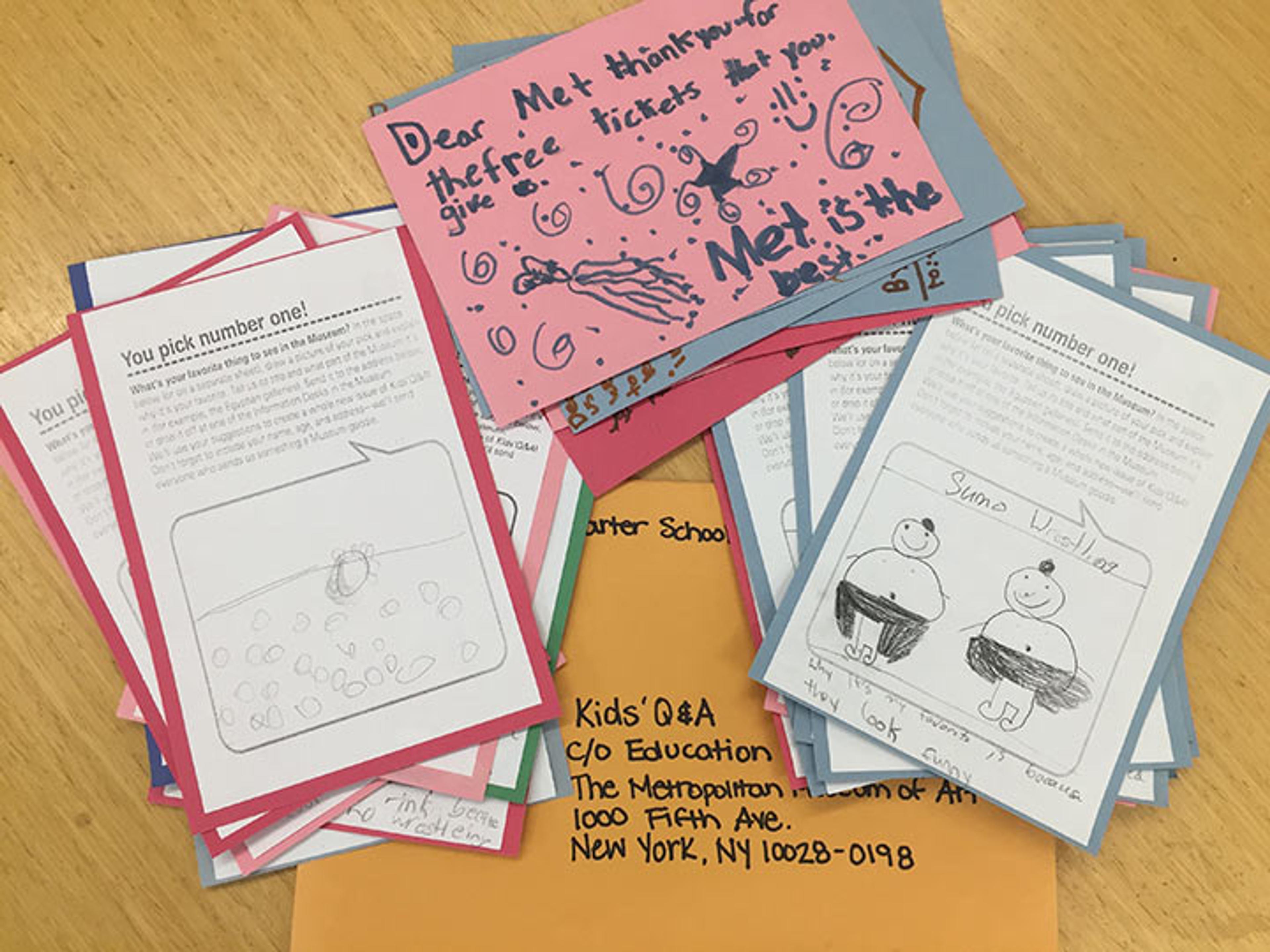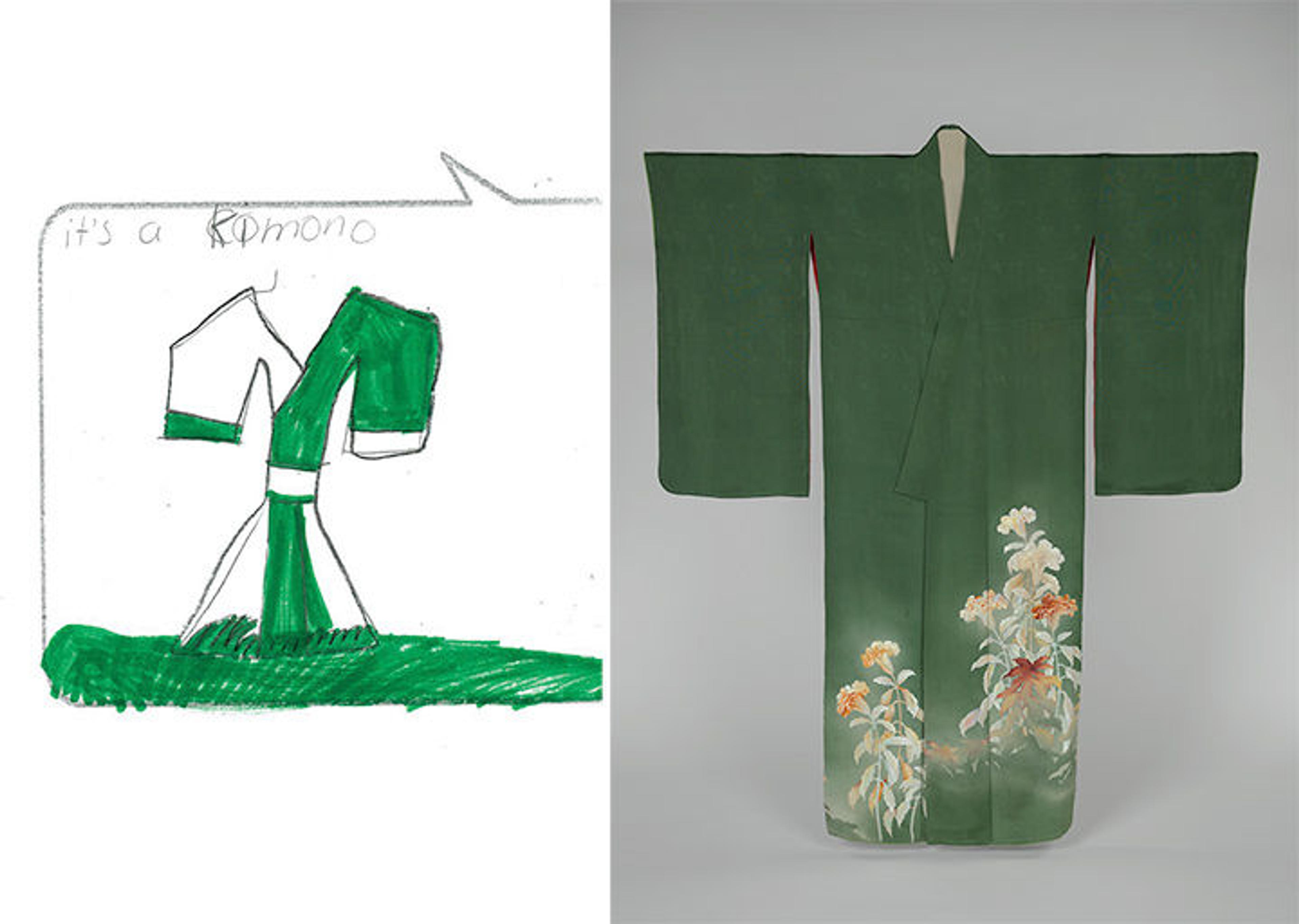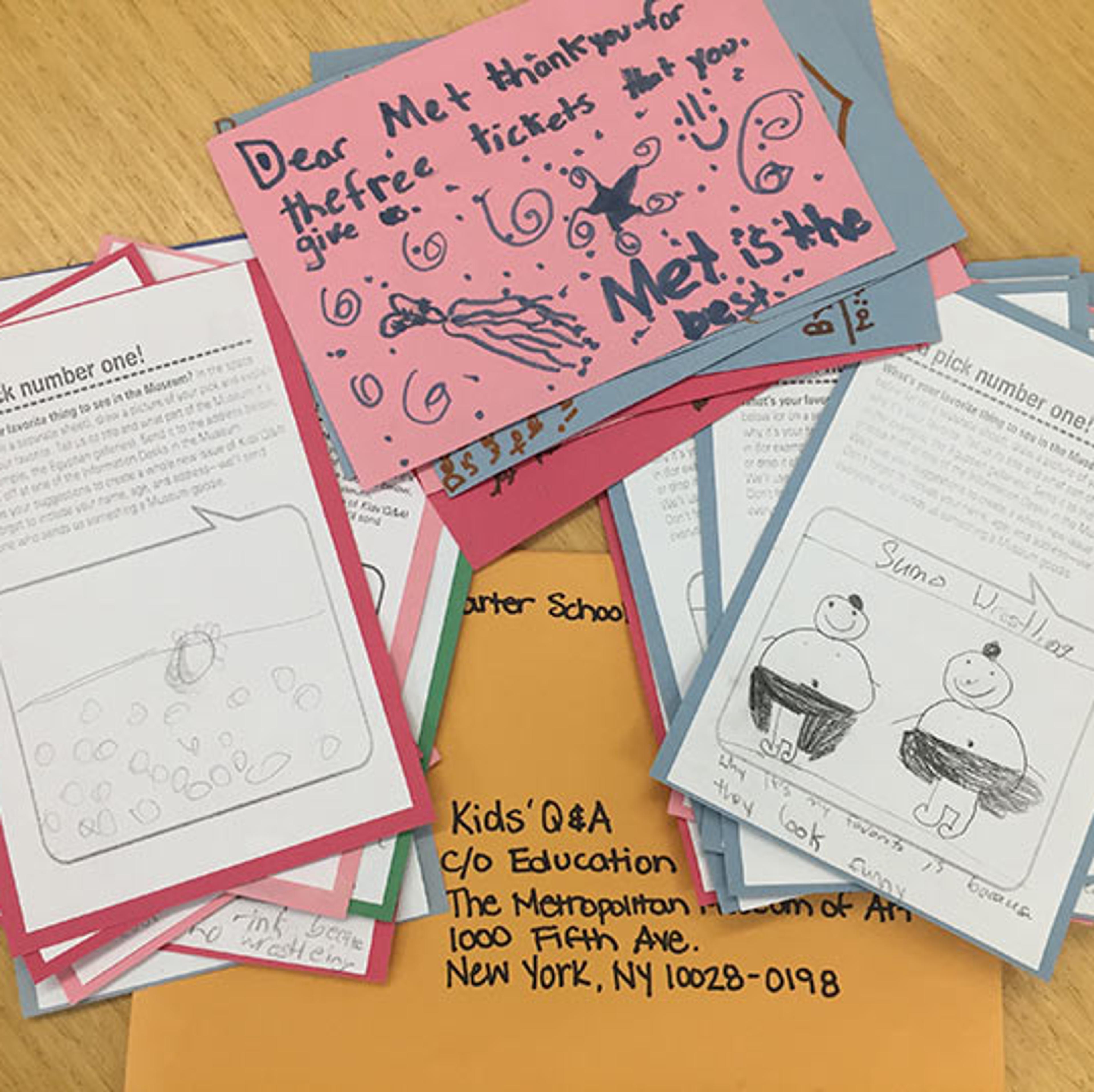
Letters and drawings sent to The Met by a third-grade class in the Bronx in New York City. Photo by Skyla Choi
#MetKids loves to respond to letters and artwork from kids all over the world who are inspired by The Met. Recently, third graders from the Bronx wrote to us about their visit to the Museum to learn about Japanese culture. Check out a few of their drawings inspired by their favorite artworks—and discover fun facts about Japanese art and culture!

Left: Drawing of Water Stone with the description, "I like that part because the water comes." Right: Isamu Noguchi (American, 1904–1988). Water Stone, 1986. Basalt, 25 x 42 3/4 in. (63.6 x 108.6 cm). The Metropolitan Museum of Art, New York, Purchase, Anonymous Gift, 1987 (1987.222). © The Isamu Noguchi Foundation and Garden Museum
Take a careful look at this stone fountain. If you look closely, you will see that the artist made some parts of the rock very smooth and left others very bumpy, or rough. Fountains like this one would be found in a Japanese garden, but instead of the water coming out of the rock, stone basins would collect water from a nearby mountain stream. This sculpture is full of opposites—for example, wet and dry. What other opposites do you notice?

Left: Drawing of a kimono by a third grader. Right: Kimono with cockscomb flowers. Japanese, Taisho period (1912–26). Paste-resist dyed (yuzen) and painted satin damask, 60 7/16 x 50 9/16 in. (153.5 x 128.5 cm). The Metropolitan Museum of Art, New York, Gift of Sue Cassidy Clark, in honor of Dr. Barbara Brennan Ford, 2005 (2005.467)
Fashion plays a very important role in Japanese culture and history. Kimono, which means "thing to wear," is a traditional Japanese garment that is usually made of silk. People in Japan used to wear kimonos every day. Today the kimono is mainly worn for special occasions like weddings or tea ceremonies. What events do you get dressed up for?

Left: Drawing of a katana with the description, "It was my favorite part because I want to be a samurai." Right: Long sword (katana) blade inscribed by Sukemitsu of Bizen (Japanese, Muromachi period, active ca. 1440); short sword (wakizashi) blade attributed to Yasumitsu (Japanese, Muromachi period, 15th century). Blades and mountings for a pair of swords (daishō), katana blade, dated 1440, wakizashi blade, 15th century; mountings, late 18th century. Steel, wood, lacquer, copper-silver alloy (shibuichi), copper-gold alloy (shakudō), rayskin, silk; katana: 34 1/8 in. (86.7 cm); wakizashi: 26 in. (66.0 cm). The Metropolitan Museum of Art, New York, The Howard Mansfield Collection, Gift of Howard Mansfield, 1936 (36.120.417a, b, .418a–c)
The katana was a traditional Japanese sword that was used by the bravest and most powerful warriors in Japan known as samurai. These warriors were known to be extremely loyal and fearless. The katana sword has a long, curved blade. The shorter sword is known as a wakizashi. Together they are called daishō, which the samurai wore as a symbol of status. If you wanted to show off your power and bravery, what would you carry around with you?
Do you want to be featured in a #MetKids blog post, too? Write us a letter or make art inspired by an object in The Met! Ask an adult to email us at metkids@metmuseum.org or send us your questions at:
#MetKids
The Metropolitan Museum of Art
1000 Fifth Avenue
New York, New York 10028
We look forward to hearing from you!
